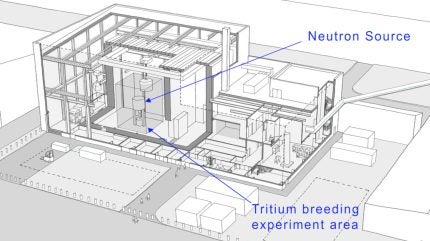
The UK Atomic Energy Authority (UKAEA) has taken a stride in fusion energy development with the announcement of a £200m ($244m) investment in the Lithium Breeding Tritium Innovation (LIBRTI) programme.
LIBRTI is part of the broader Fusion Futures project and focuses on driving advancements in fusion fuel and enhancing industry capacity through global collaboration.
The announcement aligns with the UK Department for Energy and Net Zero’s recent backing of the nation’s fusion programme and its budget plans for 2025/2026.
One of the key goals of the four-year LIBRTI programme is to demonstrate controlled tritium breeding – a vital process for the operation of future fusion power plants.
To achieve this, the UKAEA plans to acquire a neutron source, which will be central to a unique testbed facility at the Culham Campus in Oxfordshire.
UKAEA will also allocate £9m towards 12 small-scale tritium breeding and digital simulation experiments, set to run until March 2026.
The projects are expected to yield new tritium transport models, the development of innovative breeder materials and diagnostics, and digital platforms for the testbed facility.
Future fusion power plants will rely on two hydrogen isotopes, deuterium and tritium, to generate energy. Deuterium is readily available from seawater but tritium is scarce and requires sustainable production methods.
To address this, tritium is “bred” in a lithium-containing blanket surrounding the fusion reaction. The blanket performs three critical functions: producing tritium through reactions with high-energy neutrons, absorbing heat from the reaction for energy conversion and shielding the machine’s components from radiation damage.
US-based Shine Technologies is set to deliver a 14 million electron volts (MeV) deuterium-tritium fusion system in 2027. This will serve as the LIBRTI neutron source.
Shine Technologies CEO Greg Piefer stated: “Our partnership with UKAEA’s LIBRTI programme is a key milestone for fusion energy. Today, our systems are already achieving up to 50 trillion fusion reactions per second, which makes them the world’s brightest steady-state deuterium-tritium neutron sources. These fusion spectrum neutrons are essential to validate tritium breeding materials critical for scaleable fusion energy systems.
“We’re excited to work with UKAEA to develop next-generation fusion solutions to help pave the way to clean, abundant energy.”
A comprehensive digital strategy has been established for LIBRTI, featuring a building information management system and a multi-physics simulation model.
This digital framework will facilitate accurate modelling and optimisation of future tritium breeder blanket systems, ensuring the programme’s success in replicating performance.
UKAEA fusion fundamental research and materials science executive director and LIBRTI senior responsible owner Amanda Quadling stated: “We aim to move from a science experiment to providing the supply chain with the confidence needed to support future fusion power plants. The engineering scale experimental results combined with a robust digital platform offer powerful ways to design and substantiate future breeder systems for industrial use.”



